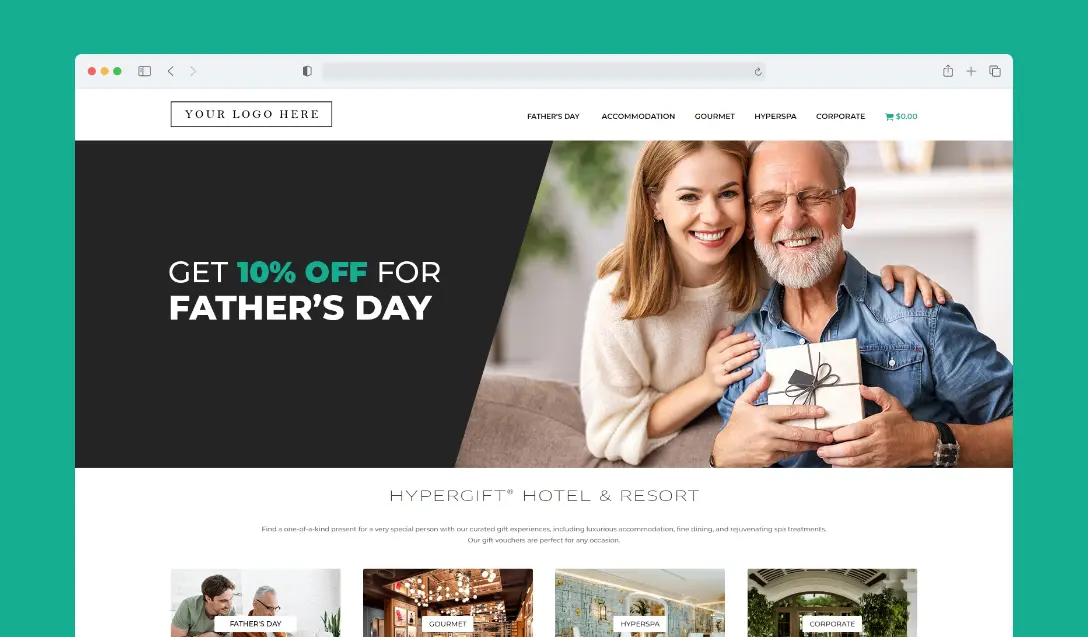Every September, businesses face the same question: how do we make Father’s Day matter commercially without sounding cheesy or transactional? For most, the answer is to ignore itor toss out a generic email campaign.
But that’s not a strategy. It’s leaving money and customer connection on the table.
Father’s Day in Australia alone generated $860 million in 2024. Globally, this figure stretches into the billions. Yet most businesses treat Father’s Day as an afterthought in their marketing calendars, assuming they don’t “fit” the occasion.
Here’s the reality: if your business sells experiences, products, or services of any kind, Father’s Day is your opportunity—not just to sell, but to build brand loyalty and deepen customer relationships. Let’s break down how.
1. Father’s Day Isn't Just About Socks Anymore
While physical gifts like watches, tech gadgets, and yes socks still dominate, but experiencebased gifts now account for nearly 30% of Father’s Day spending in countries like Australia, New Zealand, and the UK.
Shoppers are evolving. People want gifts that feel meaningful, and more importantly, gifts that are easy to buy. This is where most businesses lose potential revenue: they’re not making their gifting solutions visible, clear, or relevant.
Put simply, if your business isn’t marketing gift options for Father’s Day, people aren’t going to connect the dots to you.
What Does This Mean in Practice?
- Restaurants: Promote premium dining vouchers, brewery tours, or whisky tastings as “gifts, not bookings.”
- Gyms & wellness brands: Package memberships, PT sessions, or massage treatments as ‘Dad-approved’ experiences.
- E-commerce brands: Curate Father’s Day collections with clear, emotionally resonant messaging (think ‘Memories > Things’).
- Service businesses: Bundle services (like car detailing or adventure tours) into giftable experiences.
If you’re in business, you’re in the gifting business whether you realise it or not.
2. The Gift Voucher Mistake: “We Have Them” Isn’t Enough
Most businesses technically offer gift vouchers. Few actually market them.
If your gift cards or experiences are hidden in your website footer or buried behind a ‘Shop’ tab, you’re missing 90% of potential sales.
Here’s why:
- 78% of last-minute shoppers buy gifts within 3 days of Father’s Day.
- 54% say they only considered brands that clearly advertised gift options.
Gift cards aren’t a backup plan anymore. They’re the primary option for busy customers, lastminute shoppers, and people who genuinely want to give something meaningful but need you to make it easy.
Action Steps:
- Build a Father’s Day gift landing page.
- Promote it via email, social media, and your homepage.
- Use clear CTAs: “Give Dad an experience he’ll love” beats “Buy a Gift Card.”
3. Start Your Campaign 4 Weeks Out (Not 4 Days Before)
Here’s where strategy beats hustle:
Most Father’s Day sales happen in the final 2 weeks, but awareness starts 4 weeks out.
Why does that matter? Because Father’s Day doesn’t have the cultural marketing weight of Mother’s Day or Christmas. If you’re not creating the visibility early, customers simply won’t think of you when crunch time arrives.
The businesses that win Father’s Day don’t necessarily offer the best products. They’re simply first to remind people they exist.
4. Sell to the Buyer, Not the Recipient
This is a classic marketing mistake: you’re not selling to ‘dads’—you’re selling to their families.
Mums buying for partners. Kids buying for dads. Friends or colleagues buying for mentors.
Your Father’s Day messaging needs to address the buyer’s problem, not the dad’s identity.
Instead of:
- “Dad will love this massage.”
Say:
- “Dad will love this massage.”
5. Numbers Don’t Lie: Father’s Day Is Growing
Still think Father’s Day doesn’t apply to your business? Consider this:
- Father’s Day spending has grown 8% year-on-year since 2021.
- Experience-based gifts outpaced physical gifts for the first time in several categories last year.
- Last-minute digital gift voucher purchases increased by 26% globally in 2024.
Consumers are not just open to gifting experiences, they’re actively looking for them.
Your choice is simple:
Show up, or stay invisible.
6. Why Your Gift Voucher Platform Is Your Father’s Day Strategy
Choosing the right gift voucher solution isn’t admin—it’s your revenue engine. HyperGift isn’t just about issuing vouchers; it’s about removing every barrier between a customer and a sale. From one-click purchasing to instant digital delivery and automated tracking, your voucher system needs to do the heavy lifting so your marketing can focus on storytelling and connection.
Because here’s the data: nearly 60% of Father’s Day gift purchases happen in the final 72 hours. If your checkout process is clunky, if your vouchers aren’t delivered instantly, or if your team is manually managing redemptions, you’re leaking sales when the clock’s ticking hardest.
This isn’t optional anymore. A frictionless, fully digital gift voucher platform like HyperGift is what transforms Father’s Day from a once-a-year afterthought into a scalable, repeatable revenue stream.
Connection Drives Revenue, Simplicity Converts It
Every business that wins in this space does two things: they make the purchase simple, and they make the outcome feel personal.
Gifting is emotional, but the sale is practical. Connection builds the desire to buy but execution makes the sale happen.
Here’s the question: when customers are scrambling to find the perfect Father’s Day gift, will they find your business—or someone else’s?
If you’re ready to turn Father’s Day into a scalable, repeatable revenue channel, not just a seasonal spike, HyperGift can help.
Let’s make giving simpler and more profitable for your business.

